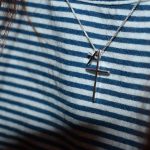Did you know that microfiber fabric is made up of fibers that are even thinner than a human hair, resulting in a soft and durable material? If you're looking to add some color and personality to your microfiber items, you'll be glad to know that tie-dyeing this material is indeed possible.
In this guide, you'll learn the essential techniques for achieving vibrant and long-lasting tie-dye results on microfiber fabric. From understanding the properties of microfiber to selecting the right dyes and mastering the tie-dye techniques, you'll be well-equipped to take on this creative endeavor with confidence.
So, let's dive in and explore the fascinating world of tie-dyeing microfiber fabric!
Key Takeaways
- Microfiber fabric is soft, lightweight, and breathable, making it suitable for activewear and outdoor gear.
- Dyeing microfiber fabric can be challenging due to its synthetic nature, but using fiber-reactive dyes designed for microfiber can result in long-lasting color.
- Microfiber fabric is easy to clean, stain-resistant, and maintains vibrant colors after multiple washes.
- It is remarkably resistant to wrinkles, requiring minimal ironing and staying fresh and vibrant even after multiple washes.
Understanding Microfiber Fabric
You might wonder what exactly microfiber fabric is and how it differs from other materials. Microfiber is a synthetic fabric made of ultra-fine fibers, typically smaller than 1 denier. This makes it incredibly soft and lightweight, with exceptional breathability. Unlike natural fibers such as cotton or wool, microfiber is resistant to stains, wrinkles, and shrinking, making it a durable and low-maintenance choice. Its tightly woven structure also gives it water-repelling properties, making it ideal for activewear and outdoor gear.
When it comes to dyeing techniques, microfiber fabric can be a bit challenging. Due to its synthetic nature, it doesn't absorb dyes as easily as natural fibers do. This means that achieving vibrant and long-lasting colors on microfiber can be more difficult, and the results may not be as predictable as with other fabrics. However, with the right expertise and equipment, it's possible to dye microfiber fabric effectively.
Properties of Microfiber Fabric
Microfiber fabric is known for its absorbent and durable properties, making it a popular choice for various applications.
It's also easy to clean, requiring minimal maintenance to keep it looking fresh and new.
Additionally, microfiber fabric is resistant to wrinkles, making it a practical and low-maintenance option for clothing, upholstery, and other items.
Absorbent and Durable
When tie-dyeing microfiber fabric, it's important to consider its absorbent and durable properties, as they can significantly impact the outcome of the dyeing process. Microfiber fabric's absorbent care and durable design play key roles in determining how well it takes on dyes and maintains its vibrancy over time.
Here's how these properties affect tie-dyeing microfiber fabric:
- Absorbent Care: Microfiber's absorbent nature allows it to soak in dyes effectively, resulting in vibrant and long-lasting colors. However, excessive absorption can lead to blotchy or uneven dye distribution, so proper pre-treatment and dye application techniques are crucial.
- Durable Design: The durability of microfiber fabric ensures that the tie-dye pattern and colors remain intact even after multiple washes. This makes it an excellent choice for long-lasting, vibrant tie-dye creations.
Understanding and leveraging these properties will help you achieve the best results when tie-dyeing microfiber fabric.
Easy to Clean
Considering its easy-to-clean properties, microfiber fabric is a great choice for tie-dyeing, as it allows for effortless maintenance of vibrant colors even after multiple washes. Microfiber's stain-resistant benefits make it ideal for daily use, as spills and stains are easily wiped away without leaving a mark.
This fabric's quick-drying advantages further enhance its appeal, reducing the time needed for laundering and allowing for a swift return to use. Its ability to repel liquids and prevent deep-seated stains also contributes to its easy maintenance, ensuring that it stays looking fresh and vibrant for a long time.
With microfiber fabric, you can enjoy the beauty of tie-dye designs without worrying about the hassle of keeping them clean.
Resistant to Wrinkles
To keep your tie-dyed microfiber fabric looking neat and smooth, you'll appreciate its remarkable resistance to wrinkles. This property makes it an excellent choice for clothing, linens, and other textile products.
Here are some benefits of microfiber fabric's wrinkle resistance:
- Low Maintenance: Microfiber fabric requires minimal ironing, saving you time and effort in maintaining the neat appearance of your tie-dyed creations.
- Long-Lasting Neatness: The fabric's resistance to wrinkles ensures that your tie-dye designs stay looking fresh and vibrant for longer periods, even after multiple washes.
- Travel-Friendly: Clothing made from wrinkle-resistant microfiber fabric is ideal for travel, as it remains crisp and neat even after being packed in a suitcase.
When tie-dyeing microfiber fabric, be sure to use colorfast dyes and follow proper washing instructions to maintain its wrinkle-resistant properties.
Preparing Microfiber Fabric for Tie-Dyeing
Before you start tie-dyeing your microfiber fabric, it's important to prepare it properly.
Begin by washing the fabric according to the manufacturer's instructions to remove any finishes or residues that could interfere with the dye.
Next, choose the colors of dye you want to use and consider how they'll interact with each other when mixed.
Fabric Washing Instructions
First, rinse the microfiber fabric with warm water to remove any surface dirt and oils, ensuring the fabric is clean and ready for tie-dyeing.
To prepare microfiber fabric for tie-dyeing, follow these fabric washing instructions:
- Use a gentle detergent: Wash the fabric using a mild detergent to ensure that it's free from any residual chemicals or dirt that may hinder the dye application process.
- Avoid fabric softeners: Fabric softeners can leave a residue on the fabric, affecting the absorption of the dye. Skip the fabric softener when washing the microfiber fabric.
- Air dry the fabric: Once washed, air dry the fabric to prevent any potential shrinkage. Avoid using high heat as it can damage the microfiber fabric.
Following these fabric washing instructions is essential to prepare microfiber fabric for successful tie-dyeing, ensuring vibrant and long-lasting results.
Choosing Dye Colors
Considering different dye colors is essential for achieving vibrant tie-dye patterns on microfiber fabric. When choosing dye colors for your project, keep in mind that microfiber fabric can produce unique results due to its composition.
Opt for colors that complement each other and consider the color mixing techniques you plan to use. Remember that the colors will blend and interact during the tie-dye process, so select a palette that will result in the desired final look.
Keep in mind that lighter colors may not show up as vibrantly on microfiber fabric, so consider using darker or more intense hues for a striking effect. Experiment with different combinations to create the perfect mix for your tie-dye design while considering the fabric's unique properties.
Proper Fabric Soaking
To achieve vibrant tie-dye patterns on microfiber fabric, start by soaking the fabric in a solution of water and vinegar to enhance dye absorption. Proper fabric preparation is crucial before beginning the tie-dye process. Follow these steps for optimal results:
- Fabric Soaking: Mix water and vinegar in a large container or sink. Submerge the microfiber fabric in the solution and let it soak for at least one hour. This helps to open up the fabric fibers, allowing for better dye penetration.
- Choosing Dye: Select high-quality, all-purpose dyes that work well with synthetic fibers like microfiber. Consider vibrant colors that will stand out against the fabric's texture.
- Rinsing: After soaking, thoroughly rinse the fabric to remove any excess vinegar and ensure the dye adheres evenly during the tie-dye process.
Following these fabric preparation steps and carefully choosing your dye will set the stage for successful tie-dye results on microfiber fabric.
Suitable Dyes for Microfiber Fabric
You can use fiber-reactive dyes for microfiber fabric tie-dyeing. When selecting dyes for microfiber fabrics, it's essential to choose ones that are designed to permanently bond with the fibers, ensuring vibrant and long-lasting color. Fiber-reactive dyes are an excellent choice for this purpose, as they form a strong chemical bond with the fabric, resulting in colors that won't fade easily, even after multiple washes. These dyes are specifically formulated for use on synthetic fibers like microfiber, making them ideal for tie-dye projects on such materials.
Before applying the dyes, it's crucial to prepare the microfiber fabric properly to ensure optimal dye absorption. Since microfiber has a tightly woven structure, it's recommended to wash the fabric beforehand to remove any sizing or finishes that may hinder the dye penetration. Additionally, soaking the fabric in a solution of water and soda ash helps open up the fibers, allowing the dyes to permeate more effectively. Proper fabric preparation sets the stage for successful dye application and ensures that the colors bond thoroughly with the microfiber.
Tie-Dye Techniques for Microfiber
When tie-dyeing microfiber fabric, start by selecting your desired folding and binding techniques to create unique patterns. Microfiber's synthetic composition makes it more challenging for dyes to adhere, so it's essential to use techniques that maximize color penetration and retention.
Here are some tie-dye techniques tailored for microfiber:
- Crinkle Technique: Scrunch the microfiber fabric into a compact bundle, securing it with rubber bands. This technique creates a mesmerizing pattern of wrinkles and creases, allowing the dye to seep into the fabric deeply.
- Ice Dyeing: Place the scrunched microfiber fabric on a rack with ice on top, then sprinkle powdered dye over the ice. As the ice melts, the dye permeates the fabric, resulting in organic, watercolor-like patterns.
- Reverse Tie-Dye: Instead of adding color to the fabric, this technique involves removing color using bleach or discharge paste. It creates striking patterns by revealing the fabric's original color in contrast to the bleached areas.
When employing these techniques, ensure the dyes used have high color fastness to maintain vibrant hues, and experiment with various creative patterns to achieve stunning, long-lasting results on microfiber fabric.
Setting and Caring for Tie-Dyed Microfiber
Achieve long-lasting vibrancy in your tie-dyed microfiber fabric by properly setting and caring for the colors. Once you've completed the tie-dye process, it's important to follow specific caring instructions to maintain the brilliant hues.
Firstly, always wash tie-dyed microfiber separately or with like colors in cold water to prevent bleeding. Use a mild detergent and avoid harsh chemicals or bleach that can cause the dyes to fade. When drying, opt for a low-heat setting or air dry to prevent heat damage and color loss.
Additionally, consider dye selection carefully. Some dyes are specifically formulated for synthetic fabrics like microfiber and are more likely to adhere permanently. Look for dyes labeled as suitable for microfiber or synthetic materials to ensure the best results.
Following these caring instructions and selecting the right dye will help preserve the vibrancy of your tie-dyed microfiber fabric for years to come.
Tips for Vibrant Results
To maintain vibrant tie-dye colors on microfiber fabric, carefully follow specific caring instructions and select suitable dyes to ensure long-lasting results. Here are some tips for achieving vibrant tie-dye results on microfiber fabric:
- Color Fastness: Choose dyes specifically formulated for synthetic fibers like microfiber. These dyes are designed to bond effectively with the fabric, resulting in colors that are more resistant to fading during washings.
- Fabric Manipulation: Consider various tying and folding techniques to create unique patterns and ensure that the dye penetrates the fabric evenly. Microfiber tends to repel moisture, so thorough manipulation of the fabric is crucial for achieving vibrant and consistent dye results.
- Proper Washing and Care: After the dye has set, follow the recommended washing and care instructions for microfiber fabric. Use a gentle detergent and wash in cold water to help maintain the vibrancy of the colors. Avoid using bleach or harsh chemicals that can cause the dyes to fade or bleed.
Frequently Asked Questions
Can I Use Regular Fabric Dye on Microfiber Fabric?
Yes, you can use regular fabric dye on microfiber fabric, but it's essential to consider color fastness and dye application. Follow the dye instructions carefully to ensure the best results for your microfiber fabric.
Will Tie-Dyeing Affect the Softness and Texture of the Microfiber Fabric?
Tie-dyeing microfiber fabric may affect its softness and texture. The process could impact color fastness and durability. To maintain the fabric's quality, follow proper care and maintenance guidelines. Consistent upkeep will help preserve its softness and texture.
Can I Machine Wash Tie-Dyed Microfiber Fabric?
To machine wash tie-dyed microfiber fabric, use cold water and a gentle cycle to prevent color bleeding. Avoid machine drying to maintain vibrant colors. Instead, air dry or use low heat. Follow care instructions for best results.
How Long Does the Tie-Dyeing Process Take for Microfiber Fabric?
When tie-dyeing microfiber fabric, the process typically takes 4-6 hours, including preparation, dyeing, and setting the colors. Recommended dye brands for microfiber include iDye Poly and Rit DyeMore. These brands offer vibrant and long-lasting results.
Can I Mix Different Types of Dyes for a Unique Tie-Dye Effect on Microfiber Fabric?
Yes, you can mix different types of dyes to create a unique tie-dye effect on microfiber fabric. Experiment with various colors and tie-dye techniques while ensuring proper fabric care and colorfastness. Careful dye application is key for vibrant patterns.
- How Does Ring Spun Cotton Affect Garment Fit and Shape Retention? - August 13, 2024
- What Are the Challenges in Producing Ring Spun Cotton? - August 13, 2024
- Is Ring Spun Cotton Suitable for Plus-Size Clothing? - August 13, 2024





